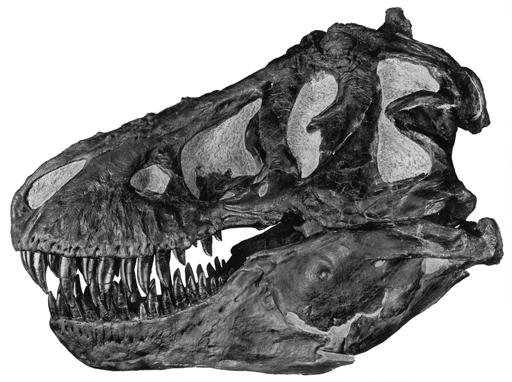
When you think of T. Rex, you probably imagine the terrifying, blood-thirsty predator from “Jurassic Park”. But it turns out there may be more to these famous dinosaurs than their massive size and blade-like teeth — they were actually sensitive lovers who liked to snuggle (kind of).
According to new research published in Scientific Reports, tyrannosaur snouts were as sensitive as a human fingertip, allowing them to navigate their environment and manage complex tasks like building nests and picking up eggs and babies. But they might have also used their snouts to engage in a bit of foreplay, the study suggests.
The researchers believe the animals might have rubbed their faces together during mating as a “vital part of pre-copulatory play.”

The titillating discovery came after scientists uncovered fossils of a new kind of tyrannosaur called Daspletosaurus horneri in Montana. The recently-discovered dinosaur lived 74 million years ago and was much smaller than T. rex, but it gave scientists important clues about how T. rex evolved.
Analyzing the unusually well-preserved skulls of D. horneri, the researchers concluded that T. rex and other tyrannosaurs had large, flat crocodilian scales on their faces that could detect changes in pressure and temperature, as well as armor-like skin around their snout and jaws.

The snout contained small nerve openings called foramina, which essentially made it into a super-sensitive third hand.
Similarly, crocodiles and alligators have sensitive bumps in their jaws, which they rub before mating. Crocodiles can also use their snouts to sense vibrations in the water as they hunt prey and look for mates.
“Assuming that crocodylians are suitable models for dinosaur behavior, and that tyrannosaurids were primarily terrestrial, tactile stimulation, such as rubbing, was probably more important in tyrannosaurid agonistic behavior than detecting water-borne vibrations.” the study’s authors conclude.
Of course, some time after mating, a baby T. Rex will be born. What would this baby look like, you ask? Look no further than the video below:




